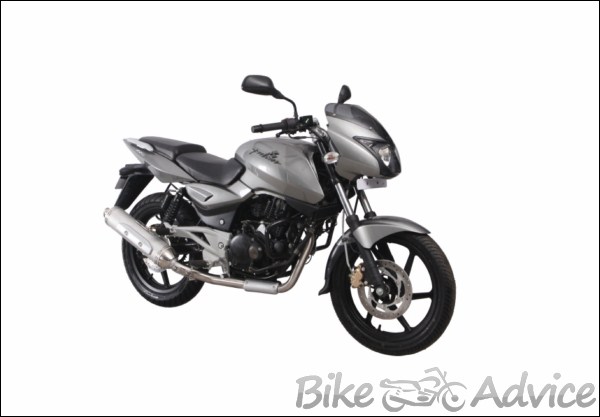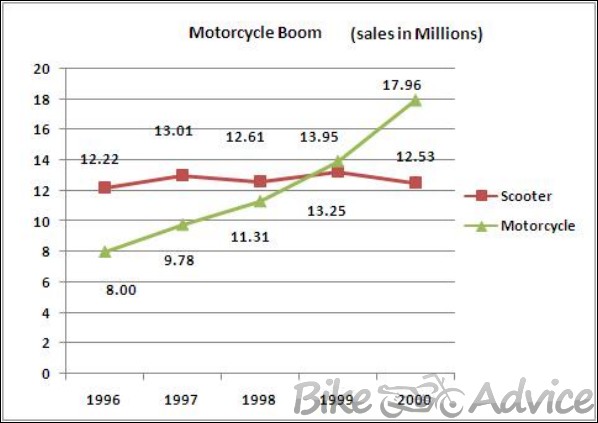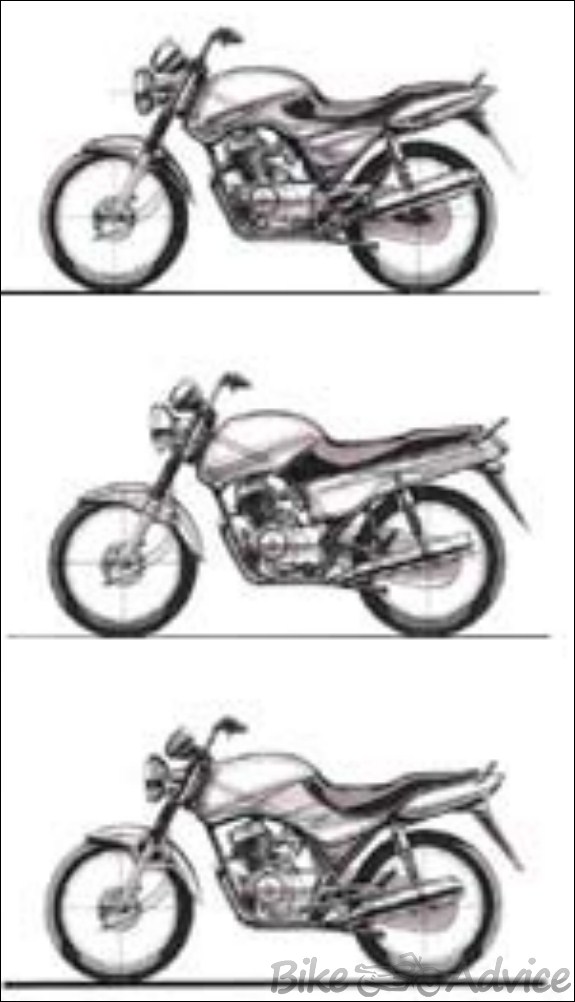On the 19th October of this month Bajaj Auto announced its second quarter result for FY 2010-11. The company said that it has sold 2,46,000 units of Pulsar and 3,92,000 units of Discover sold in just a single quarter which is transforming average monthly sales figure of 82,000 units of Pulsar and 1,30,670 units of Discover. The figure achieved by company though there were so many capacity constraints. Discover 150 which was launched in May 2010 has done more than 1,10,000 units in this quarter.
Today every second bike sold in performance segment is Pulsar which is enough to show its dominance in Indian market. Many people doubt that was Pulsar produced by Bajaj Auto. The company which was iconic symbol of scooter transformed in to a true motorcycle manufacturing company and that too largely in performance segment. The story is not only about how pulsar and discover born but also about how Bajaj Auto learn the art of manufacturing and marketing motorcycle.

History: Bajaj Auto is a company which was once dominating Indian two wheeler industry. The company’s Chetak brand had 10 years waiting period in 1970’s and 1980’s decade. Rahul Bajaj chairman of company once dared the government to arrest him for exceeding government permitted production limits. In 1980’s decade government liberalized the foreign collaboration policy and capacity licensing policy which allowed all the world’s major player like Honda, Yamaha, Suzuki, Piaggio in to the Indian two wheeler market. The company had seen glorious past till the 90’s decade.
It is the time when Rajiv Bajaj son of Rahul Bajaj joined the company after completing his M.S. in manufacturing systems engineering from the University of Warwick, UK. Rajiv Bajaj who had no interest in the scooters built by his father, at the very first day realized that everything was going wrong in the company. For him, Bajaj Chetak, the company’s flagship brand of scooter was a symbol of the past. The manufacturing process was outdated. The company’s workforce was living in glory of past and did not want to change. Even his father was not able to see the changing paradigm of Indian two wheeler industry.

Shift of Consumer preference towards motorcycle: The sales of motorcycle started rising in 1990’s decade and by 1999 the motorcycle sales overtook scooter sales for the first time. It was clear indication of shift of consumer preference towards motorcycle. Hero Honda which was established in 1984 by Hero group and Honda Motor Corporation of Japan were ripping the benefit of this trend. It was tough time for Bajaj Auto who only knows to produce two stroke scooters and three wheelers. Adding to that the scooter sales was falling at rapid speed.
Bajaj Auto suddenly found itself on 4th rank for motorcycle after Hero Honda, Yamaha and TVS. Rajiv knew that the trend is changing and he took some serious steps. He built a new plant in Chakan near Pune away from the old set up at Akurdi to make motorcycle. He invested big money in R & D and product development. The most important thing he wanted to do was changing company’s brand image from manufacturing scooters to motorcycle. This is what people used to say about Bajaj Auto
“You can’t make bikes. Even if you make bikes, you can only make 100cc bikes with the help of Kawasaki and that too with issues of quality. Then you need hundreds of Japanese to come and set it right”.
Bajaj Auto’s motorcycle manufacturing cost was too high, the quality of product was poor, the manufacturing process was outdated and to the most its motorcycle was not able to give fuel efficiency as of its Japanese competitors. . Rajiv Bajaj recalls how things were wrong at Bajaj Auto.
“We went into a series of new products around 1995, and started focusing on motorcycles. And we were aghast because the only reasonably sophisticated product we were making was the Kawasaki four-stroke motorcycle. And the warranty cost of our motorcycle was five to six times that of Hero Honda. It was bad quality… bad quality of manufacturing.”
“There was great cynicism whether something was wrong with Kawasaki or with Bajaj. Kawasaki couldn’t have gone wrong in that. We were sure that the same motorcycle made by Kawasaki in Japan would not have had these problems. There was probably something wrong with us.”
The above statements itself talk about how serious the situation was. The company was facing threat of survival. The company had no motorcycle in their portfolio to fight against Japanese rivals.

The Birth of Pulsar:
To come out the worst condition the junior Bajaj decided to make a motorcycle which can create hallo around the Bajaj bikes. He decided not to chase Hero Honda instead he though to make a motorcycle which seems impossible for Bajaj to produce that time. He decided following criteria for his new bike.
- There are 15 guys who have never made a bike but are going to come together to do that.
- They are going to do that on their own, and not with Kawasaki
- They are going to d a 200cc bike when they couldn’t a 100cc one.
- They are going to make the fastest motorcycle when they couldn’t make a mass motorcycle.
- They are going to make a huge amount of profit when they were making a loss.
Rajiv was accompanied by his brother Sanjiv Bajaj who completed his MBA from Harvard University. Sanjiv Bajaj strongly believed that a successful company needs a good product after reading history of big companies like Honda, Toyota and Apple. He saw one more thing in the worker of Bajaj Auto “Attitude Problem”. The workforce at Bajaj Auto did not believe that they can bring Japanese management practices in to India.
Another problem was Bajaj auto was so successful with autorickshaws that production becomes top priority and that’s obvious when you have 10 year waiting list. There was lack of new ideas and new management practices hence both brothers decided to change this situation
Rajiv Bajaj started implementing new changes. He introduced “Streamlined Manufacturing Systems (SMS) to enhance production quality and productivity. His change process was always doubted by senior board member of the Bajaj Auto. To prove everybody wrong the Bajaj brother decided to build Chakan plant as a live engineer laboratory and to produce the new product line of company. According to Rajiv Bajaj
“Each time I tried to push a radical idea, I always got the answer directly or indirectly — that it’s OK in Japan. It doesn’t happen in India. So I was desperate to prove that it happens in India. I wanted a plant where we start the right way from day one. That’s how Chakan started.”
Everything was new for Chakan plant, an entire new workforce consists of young graduates mainly, a new management style and new equipment and machinery for Bajaj’s new bike pulsar.

The R & D team which makes it possible
In the words of Rajiv Bajaj “What is R&D? It’s nothing but an engineer who wants to try something. We always tell ourselves that some of the best motorcycles were made by BMW and Honda long before the computers were invented. It’s really the spirit of the engineer which is important for R&D. When I walked into the Kawasaki R&D for the first time, I thought I would see a lot of old grey-haired people with thick glasses. The average age there is 26 or 27. The engineer does not require experience. You need people with imagination. Our R&D today is 113 people. The average age there is under 30.”
The new R & D team for pulsar was comprised mostly guys who themselves loved riding bikes and able to understand the customer’s requirement as user. The pulsar R & D team was headed by
Abraham Joseph (The brain behind every pulsar engine) who joined Bajaj auto in the year 1989. The other name is Ravi Darad who is an engineer from IIT-Bombay and who is keen biker himself. The junior Bajaj had full faith in his R & D team.
For the initial designing part Rajiv selected Glyn Kerr Tokyo R & D. This R & D firm designed initial sketches of pulsar. There were more than 40 approaches were forwarded to Rajiv Bajaj before the final design selection. Few were aware about the fact that the earlier idea was to develop 125 and 150 cc engine but doing 125 and 150 cc was not matching caliber of Rajiv’s R & D team so they decided to do 150cc and 180 cc.
There were 7 designs were finalized out of 40 which took 3 months time. The final design was completely reworked by Rajiv and his R & D team. The final look was given by Ravi Darad who worked on all the tape drawings, clay mock-ups and early layouts in the metal. The special thing about this project that the initial design renderings, everything was done on computers, making it one of the first truly paperless projects executed in the Indian automotive industry.
The pulsar engine was developed for matching Japanese level quality, refinement and reliability keeping in mind. It was hard to do so but Joseph Abraham led R & D team never lost faith. Class leading quality parts were used to develop pulsar engine. For example the pistons were supplied by Shriram pistons, the CV carburetor was supplied by Ucal Mikuni, the only item imported was crankpin from Japanese firm. The entire project took 30 months time and cost of around Rs. 1 billion.

“The number of mistakes we have made in the Pulsar engine before we got it right is really the learning. One of the endurance tests we have is to take the engine full throttle. Now, full throttle on a bike is rare on the road. Our target was: full throttle for 100 hours continuously. The first time, it failed within 10 minutes. Today, the Pulsar engine goes 300 hours full throttle.” Rajiv Bajaj
All these effort resulted in a motorcycle called Pulsar which is the icon of performance brand in India today. The first generation Pulsar got 18 liter fuel tank, muscular look, disc brake (which was considered novelty in that time), self start option, Air craft type filler, a unique speedometer with rpm meter and above all power plants which were able to produce massive 12 bhp and 15 bhp with power to weight ratio of more than 100bhp/ton.
This was the half done stage the pulsar project got another challenge of sales distribution and marketing. Till the date Bajaj’s dealers were selling scooters majorly and they had a little idea how to sell motorcycle. So the entire dealership network was trained to sell motorcycles. The most important change Rajiv did in marketing was the “Definitely male” tag. Before pulsar, motorcycles were used to have pronoun she but it was pulsar who wanted he pronoun for motorcycle.
Before the launch of Pulsar Indian motorcycle segment was crowded by commuter oriented motorcycle. Hero Honda’s launch of CBZ in 1999 reveled that people want more power, style and rugged biking rather than just commuting. It was a good time for Pulsar to be in market as there was no other bike than CBZ can offer such things. Finally in November 2001 Bajaj Auto launched pulsar 150 & 180.
The Pulsar got instant hit and outsold every other 150 cc motorcycle available in the market. Bajaj Auto targeted the 25-35 age segment but they got tremendous response form 35-45 age group. The first generation pulsar did have quality issues but it was the only bike in the 150 cc segment which was fulfilling the needs of customer. To overcome quality issues Bajaj Auto emphasized on vendor management. The no of vendors reduced from 1000 to 300 and if required vendor had been given training from foreign consultant on producing quality parts. In just 18 months of time Bajaj came with DTS-i technology on pulsar which further strengthens its leadership position in performance segment.
To be continued…
– Mahavir Kothari
This Post is Inspired from, The Inspiring Story Behind the Birth of The Bajaj Pulsar from The Bike Chronicles of India.


